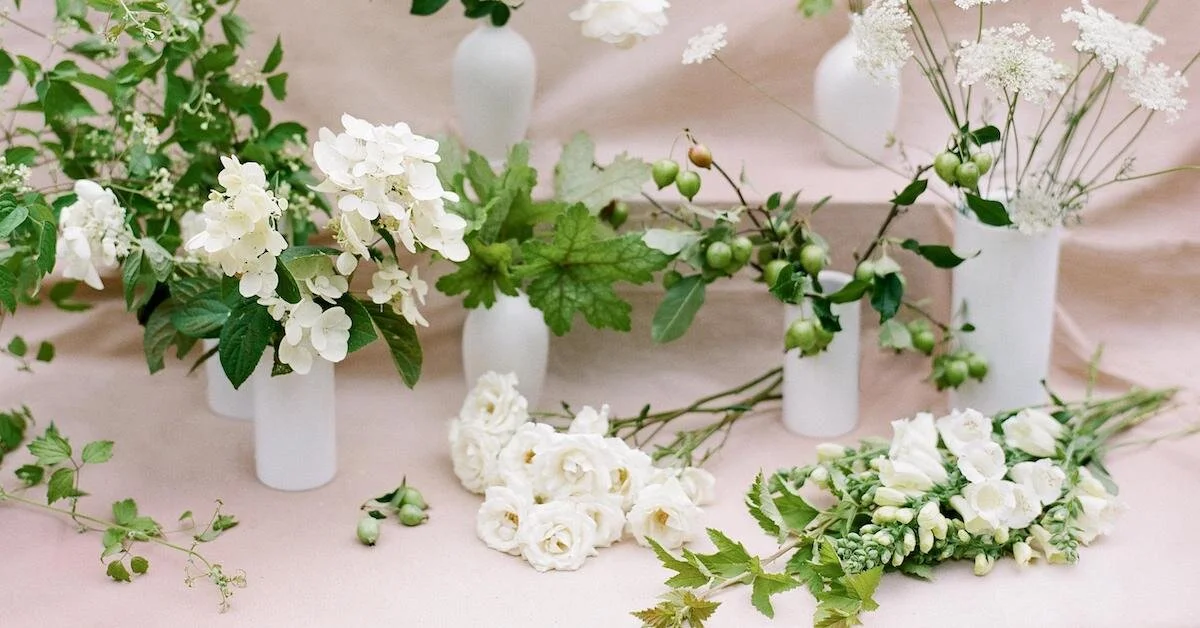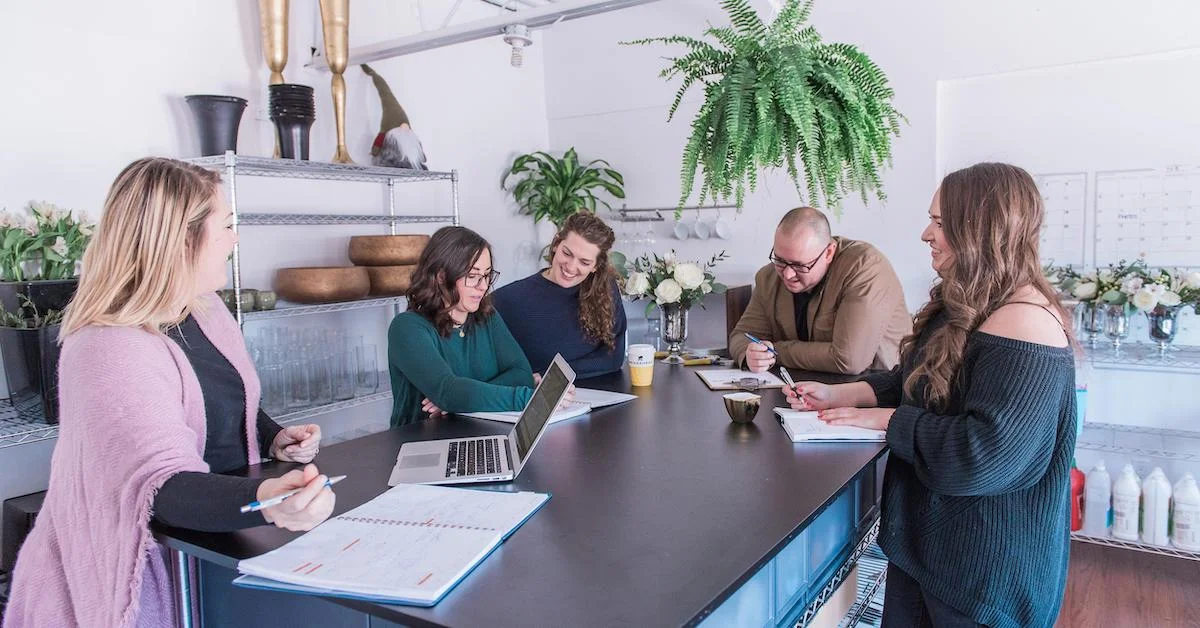How to Manage Multiple Creative Projects at Once
If you consider yourself an artist, often you'll find yourself wanting to focus on more than one thing. As a creative, I believe that every day can be different when it comes to enjoying your career.
I could never pinpoint exactly what I wanted to be when I grew up, and as a child, I was always fascinated by more than one field. Even so, I learned that we don't always follow through with our intended plans for the future, and at least for me, it tends to be ever-changing.
I've done everything from nonprofit work to marketing, found myself in retail, in a floral shop, and now on a vineyard. As an estate manager at a vineyard, I can express my talents in landscape design and floristry. I even hold five floral workshops at the vineyard each year as well as create the ambiance for the 1500 customers that visit us.
In my small business, I am a floral designer for private clientele and a photographer (because I love to take photos!). I am always doing something different every day. This allows me to be creative in multiple areas. I've found that there is a way of doing all that I love as long as I have the right combination of skills and a set of methods to keep me afoot.
If you’re like me and like to have multiple projects or roles going at once, it’s crucial to develop a set of processes that work for you because you might find yourself overworked and a bit all over the place if you're not organized. I learned to manage it all with trial and error, with a ton of projects, and handy-dandy notebook to keep organized. Many of these components allow me to be as creative as I want to and, most importantly, keep me doing something new every day. Here are a few tips from I've learned along the way.
Take Care of Your Workers
This is key in your ability to be successful because, if you're a business owner, a manager, or in charge of multiple workers, they are the ones doing the majority of the work. Treat each worker's effort seriously. Because they hold you to a leadership standard, they look to your approval and guidance in all they do.
I have two workers who help me run my proprietors vineyard, some staff members to assist in seasonal changes at the vineyard for ambiance, and even a handyman who assists in maintenance. They are loyal and will stick with you if you show passion, handwork, and leadership to complete goals. And many times, they are the reason that you execute your own. You will bring out the best in them even if they doubt themselves—and they’ll bring out the best in you, too.
I have learned that employees often do not like change—even if it's as something small like a piece of new equipment. Showing them ways to overcome fear or doubt while learning something new and challenging them will strengthen their skills. As a manager, you not only have to inspire yourself but also your workers. This will ensure they do their absolute best and that you, as a manager, always have their best interest in mind.
Manage Your Time Effectively
Managing your time will ensure that projects are done in a timely manner. Everything that brings profit has a deadline. When I am preparing my floral workshops for the vineyard, I spend a lot of time creating a timeframe for everything—because there are many aspects involved, from sending out the marketing to getting the tickets for material order.
I also have to prepare the facility the day of and keep as close as possible to the workshop's agenda. Eventually, it all becomes a routine, and I simply go down a checklist to ensure it's done. I recommend using a journal to keep notes and ideas fresh (I tend to forget a lot of details!). Having a journal allows me to write down what may have worked (or what didn’t work!) so I can plan things differently in my future workshops.
While creating change for seasonal decor, I tend to go based on a modern trend, keeping to a yearly calendar. If I have a project for a landscape change or design, I will sit in the area and brainstorm the framework. I always give myself a deadline because landscaping projects take time. Managing your project's timeframe and execution can be difficult when you have some components that are out of your control, like facility use, staffing, weather, etc. Keeping a deadline will ensure that you can move on to the next thing. Perfection can be incorporated later.
Developing Consistency
Every season on a vineyard relies on consistency from the year before to ensure consistent yield and less maintenance in the vineyard.
This is why making sure that pruning, spraying, and irrigation is done consistently every year around the same time is so important. I learn a lot from the vineyard workers because every vineyard is maintained differently.
With any growing project, you want to shoot for a beautiful outcome with a substantial yield of fruit (or flowers) for harvest. If you're planting, each varietal has a season for flowering and dormancy. I usually try to shoot for annuals and plants that need less maintenance. Knowing the difference between annuals and perennials will help maintain the look in seasonal change. Keeping up with it will be easier to maintain and most likely require less drip line (if you’re working with larger planting areas or acreage), which means less water usage.
Being consistent in your floral designs will allow your floral designs to come out beautifully all the time. It's nice to have a sense of look and palate while only making a few additions or changes—like color or different focal points. I tend to take photos of my work so that I know how many stems I use within my arrangements. It's important to make sure that you're not losing any profit, so every stem counts!
Designing Through Creativity
Every design comes from a place of creativity or inspiration. I am more of a visual artist, so I need to see what I'm working with. For example, when I have a landscape project, I need to know three things:
1) how much square feet I need for materials,
2) the ambiance of the area, and
3) whether the season is right for whatever I am planting.
Taking photos of the area allows me to create the design in my head and visualize what I want to execute. I like to look for patterns and composition while creating something. I always have to determine whether people will like it and whether it has been done before. If you have to keep to a budget, you want to make sure that what you want to create is practical and realistic. It's all about inspiring the person looking at your work. There is no wrong or right way to place something; however you do it, it should be artistic.
As a floral designer, it's important to explore different avenues to inspire clientele and keep them interested. This will ensure them coming back for your business. Pinterest is not something I like to use because replicating something is harder than you think, and, in reality, those designs aren't quite yours. Clientele should come to you because they believe you understand what they are looking for. By foregoing Pinterest (or using it sparsely), you'll get to know your clients' style and incorporate yours. I've come to realize that photography has been the core of my inspiration. I tend to take photos of everything I do, including landscape scenes and "up close" shots of my flowers and arrangements. Using what you already know, combined with a small budget, can still create an excellent outcome. Just be creative.
Following Through Each Project
Executing your goals with little to no change is something that's hard to come by. In fact, something is always going to go in the opposite direction despite your hard work and plan to finish. In a perfect world, things would go exactly the way we wanted them to, but change is inevitable in a creative world.
That change can sometimes bring out an unexpected awesome job. There are times when I can't source the right flower for a particular creation, or I didn't thoroughly think through a design for a layout. Practicing patience and allowing yourself to clear your mind before doing something will allow for that better outcome. The key is to follow through, no matter what, and change what you can. Keep the negative thinking out! Nowadays, it's easy to get distracted and procrastinate. There are times when I think of giving up, especially if I find that the project I am working on is nothing like what I expected. But as a leader, following through inspires not only my clients, my workers, and my staff, but more importantly, myself.
Remember, you are your own worst critic in all that you do. It takes practice, patience, and a set of skills to be successful. The good news is that developing those skills and your preferred method is really up to you. Whether you are in one field or multiple fields with many demands, nothing is impossible. If you take care of your workers, manage your time effectively, develop consistency, design through creativity, and follow through each project, I guarantee you won't be wasting your time, and your goals will be easier to achieve.










